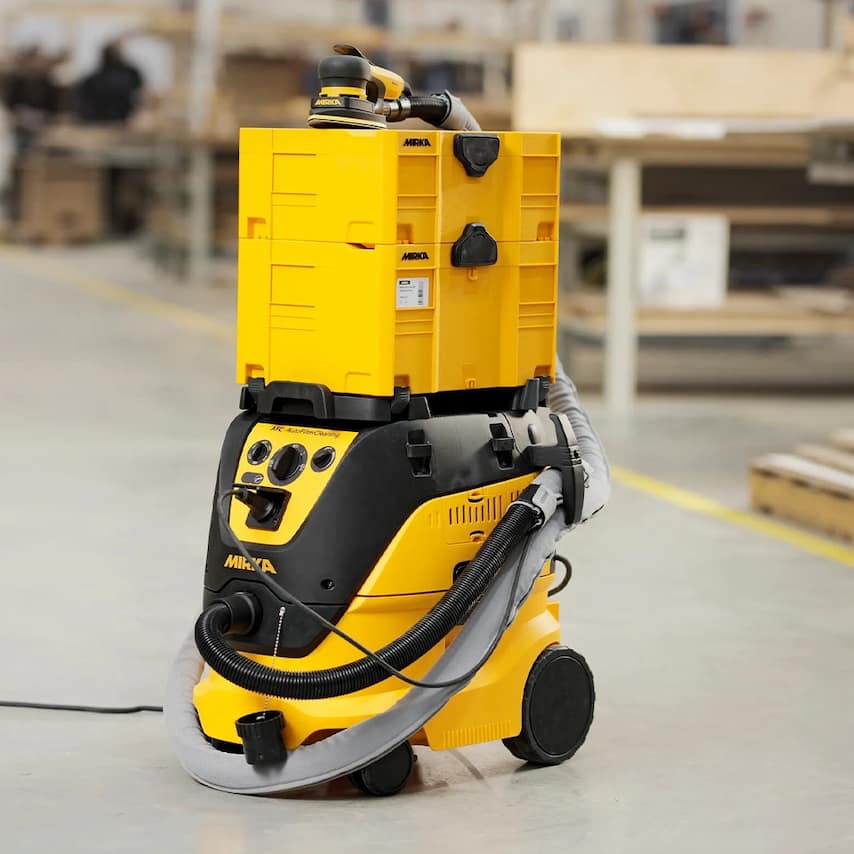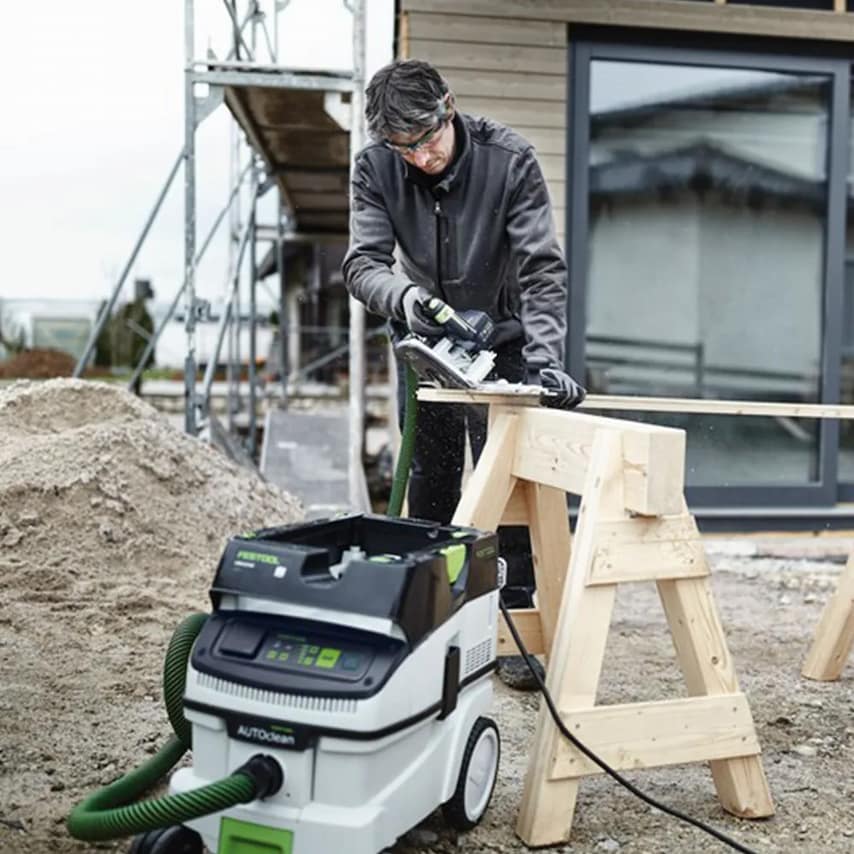Dust generated in workshops, especially woodworking environments, poses a serious health risk. Fine particulate matter from sanding, cutting, and shaping wood can easily become airborne, causing respiratory irritation, allergies, and long-term lung problems.
Dust also settles on surfaces and machinery, requiring extra cleaning and causing potential operational issues by impairing tool functions and increasing wear. Maintaining a clean workshop is essential for creating a safe, healthy, and productive workspace.
Understanding Dust Extractors: Your Workshop’s Best Ally

Dust extractors are specialised systems designed to remove dust directly from woodworking tools and processes at the source. They use a powerful motor-driven impeller to suck dust and air through hoses connected to extraction ports on machines like saws, thicknessers, and routers.
The dust-laden air passes through multi-stage filtration systems that separate and contain dust particles before cleaner air is released back into the workshop environment. By capturing dust immediately, these extractors reduce airborne particles, improving respirability and minimising cleaning needs. Unlike standard vacuums, dust extractors are engineered for continuous, heavy-duty use, making them indispensable for maintaining air quality and efficiency in active workshops.
Choosing the Right Dust Extractor for Your Needs
Selecting the correct dust extractor hinges primarily on airflow capacity, compatibility, and workshop layout. Airflow, measured in cubic feet per minute (CFM), determines how much air, and therefore dust, the system can move. Each woodworking machine requires a certain CFM to extract dust efficiently. For example, a bandsaw typically needs about 300 CFM, a table saw around 400–800 CFM depending on size and type, a router table 500 CFM, and large thicknessers up to 1000 CFM or more.
To size a dust extractor for your workshop, calculate the total CFM needed by adding the requirements of all tools running simultaneously. It is important to account for losses due to duct length, bends, hose types, and fittings. A typical rule is to expect a 15–20% loss in system airflow. Ensuring your dust extractor can meet or exceed these demands means dust is effectively captured across all workstations.
Compatibility of hoses and extraction ports also matters to maintain suction power; mismatches can cause airflow restrictions, reducing efficiency. Mobile units with locking wheels can add flexibility, especially if the workshop layout changes or tools are moved. Noise levels, filter types, and dust containment capacity are additional important factors to consider. Buying dust extractors suited to your setup will significantly enhance workspace safety and productivity by providing reliable, tailored dust control.
Key Features and Technologies in Modern Dust Extractors
Modern dust extractors incorporate technologies that enhance dust capture while easing usability and maintenance. Multi-stage filtration systems typically include pleated cartridge filters combined with fine mesh collection bags, capturing dust particles down to sub-micron sizes for optimal air quality. Many units feature automatic or manual filter cleaning mechanisms that reduce clogging and preserve suction power.
Adjustable suction settings allow users to tailor extraction power to the specific task, conserving energy during lighter-duty work and boosting it for heavy dust loads. Noise reduction features improve workshop comfort, and convenient dust disposal systems enable quick, mess-free emptying of collection bins or bags. Efficient airflow design, with smooth ducting and minimised bends, also plays a key role in maintaining strong suction across complex setups.
Complementary Dust Control Solutions and Practical Advice

Dust extractors function best as part of an integrated dust management system. Room air filtration units are excellent additions, capturing residual dust particles that escape capture at the source and continuously cleaning ambient air. When setting up ductwork, use rigid metal piping where possible to reduce airflow resistance, static buildup, and leakage compared to flexible hoses or PVC. Keep ductwork as short and straight as possible with gentle bends to minimise pressure loss.
Isolating unused machines with blast gates helps maintain airflow to areas currently in use, increasing overall system efficiency. Regular inspection and maintenance, including checking hoses for leaks, cleaning or replacing filters, and ensuring tight connections, preserve optimal extractor performance. Grounding ductwork is crucial to avoid static buildup, which can be a safety hazard in dust extraction systems. Mobile extractors with durable locking wheels offer adaptability for varied workshop layouts, while adjustable suction controls provide operational flexibility for different tasks and dust levels.
Breathe Easier with Effective Dust Management
Choosing and maintaining the right dust extractor system is vital for the health, cleanliness, and operational efficiency of workshops. By removing dust at its source and using advanced filtration, these systems safeguard respiratory health, reduce maintenance time, and protect valuable machinery. A thorough understanding of airflow requirements, proper ducting design, and regular maintenance forms the foundation of effective dust control.
Supplementing extraction with ambient air filtration improves overall air quality further. Wise investment in dust extraction tailored to your workshop’s specific tools, size, and dust production ensures a cleaner, safer, and more productive environment, helping craftsmen and users breathe easier while focusing on their work.
